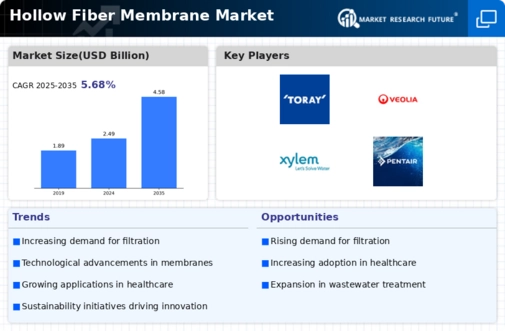Hollow Fiber Membrane Market Summary
The Global Hollow Fiber Membrane Market is projected to grow from 2.49 USD Billion in 2024 to 4.57 USD Billion by 2035.
Key Market Trends & Highlights
Hollow Fiber Membrane Key Trends and Highlights
- The market is expected to experience a compound annual growth rate of 5.69 percent from 2025 to 2035.
- By 2035, the market valuation is anticipated to reach 4.58 USD Billion, indicating robust growth potential.
- in 2024, the market is valued at 2.49 USD Billion, reflecting a solid foundation for future expansion.
- Growing adoption of hollow fiber membrane technology due to increasing demand for water treatment solutions is a major market driver.
Market Size & Forecast
| 2024 Market Size | 2.49 (USD Billion) |
| 2035 Market Size | 4.57 (USD Billion) |
| CAGR (2025-2035) | 5.68% |
Major Players
Toray Industries, Inc., Asahi Kasei Corporation, Mitsubishi Rayon Co., Ltd., Nitto Denko Corporation, Veolia Water Technologies, Pall Corporation, Evoqua Water Technologies, 3M, Mitsubishi Chemical Corporation, Pentair, Membrana, Dow Chemical Company, GE Water Process Technologies, Suez Water Technologies Solutions, Hydranautics, Koch Membrane Systems














